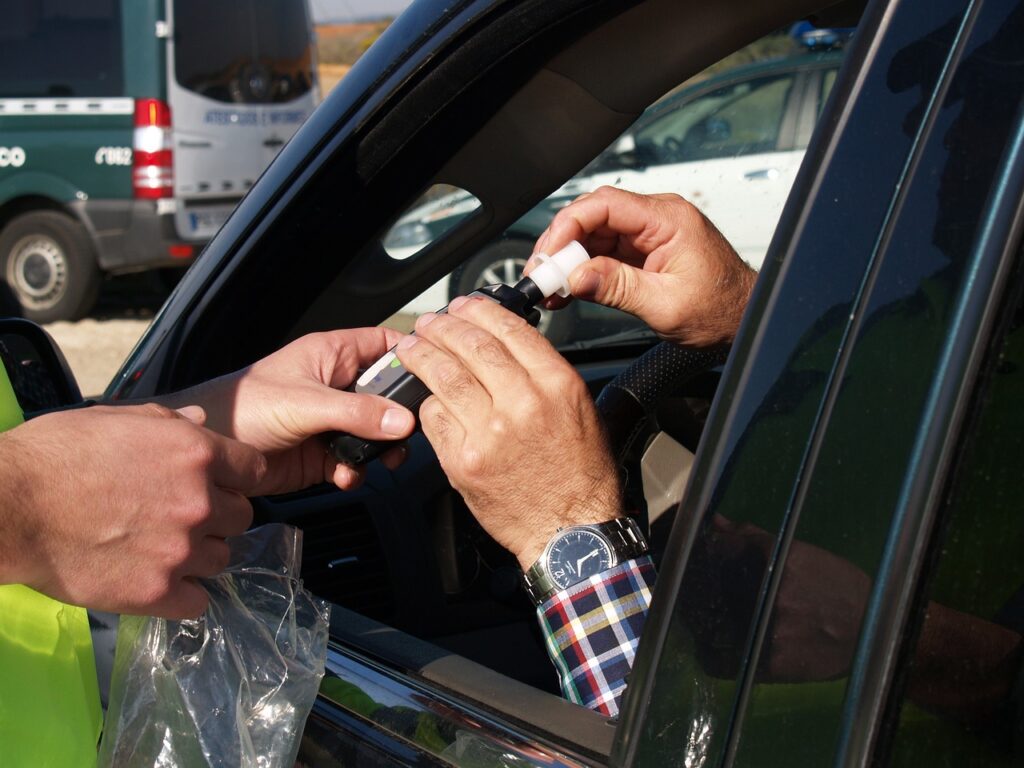Drunk driving is a significant problem in Texas. Our research into the 2023 auto accidents in the state revealed that 1,138 individuals died in drunk-driving-related crashes in 2023.
For those who sustain devastating life-limiting injuries in accidents caused by negligent drivers who get behind the wheel after a few too many drinks or who tragically lose loved ones because of drunk drivers, a personal injury claim can ease the financial burden and provide justice by holding the person who caused the collision accountable.
Texas law sets a blood-alcohol concentration (BAC) limit, and if a driver exceeds it, they are legally intoxicated.
But the law is nuanced, and the “standard” BAC limit — the limit most motorists must adhere to — does not apply to all drivers.
McAllen and San Antonio personal injury firm Patino Law explains the legal alcohol limits in Texas and how a positive blood alcohol test result supports a Texas drunk-driving accident claim.
What Is Blood Alcohol Content?
Blood alcohol content (BAC) is a legal and medical determination of the percentage of alcohol in the body. Law enforcement commonly measures BAC by administering a Breathalyzer test, but BAC can also be measured using a blood or urine sample.
BAC is calculated in milligrams per 100 milliliters of blood or 210 liters of breath. The test presents the result as a decimal, which correlates to the percentage of alcohol in the body. If a driver’s BAC is .09, there is 0.09 percent alcohol in the blood. Similarly, a result of .13 means there is 0.13 percent alcohol in the bloodstream.
What about Individual Tolerances?
Alcohol impacts everyone differently. Tolerance is dependent on multiple factors, including a person’s:
- Rate of consumption (how much, how often, and how quickly they drink)
- Body weight
- Food intake
- Age
- Gender
- Prescription regimen (some medications can increase the likelihood and severity of side effects when mixed with alcohol)
- Genetics.
BAC tests are objective — an individual’s unique tolerance will not result in a higher or lower result. However, tolerance can and does affect behavior, as it influences how affected by alcohol a person feels.
For example, a young woman with a low body mass index (BMI) who rarely drinks and does not eat before consuming alcohol will likely have a lower tolerance than a 200-pound man who drinks every night after work and at the weekend after a big meal. If both of these people went to a party, the young woman might feel tipsy or drunk after a small glass of wine, while the man might not begin to feel the effects of the alcohol until they have had several drinks.
A person with a higher tolerance for alcohol might get behind the wheel feeling alert and responsive but be over the legal limit. A high blood alcohol content can still impair individuals, reducing reaction speed and affecting judgment, and the results can be catastrophic.
Regardless of how sober a driver feels, if they are in a crash — whether their fault or someone else’s — and a police officer tests their blood alcohol, the result will show they have too much alcohol in their system to be driving.
Of course, the reverse is true — a person with a low tolerance might legally be under the limit but experience severe physiological effects that cause them to feel much drunker than they are. These are extreme examples, but they illustrate the importance of personal accountability.
The ideal scenario is that nobody drives when they’ve been drinking, even if they are under the limit. The next-best scenario is that those who do drink understand their tolerances to ensure they do not get behind the wheel if they are impaired (even if under the legal limit) or they exceed the legal limit.
Areas in Greater San Antonio We Serve
What Is the Legal Alcohol Limit in Texas?
So now we know how blood alcohol content is measured and the impact of tolerance on how alcohol affects individuals, but what does Texas law say?
The legal alcohol limit for Texas motorists — as per Section 49.01(2) of the Texas Penal Code — is a BAC of .08 (or 0.08 percent).
Law enforcement can arrest any driver with a BAC of 0.08 or more on the charge of driving while intoxicated (DWI). But that’s not the only legal definition provided by Texas law.
A person is also legally intoxicated if they “do not have the normal use of mental or physical faculties due to alcohol or drugs.”
What does this definition mean in layperson’s terms? We know alcohol affects people differently, not just in terms of tolerance but also behavior. Some individuals might slur their words or struggle to walk straight, while others might become easily agitated or tired or have difficulty concentrating. If a driver shows any of these signs or is impaired in any other way — in other words, if they are not alert and cannot react as a sober driver would in any other circumstance — the police can arrest them for intoxication, even if they are under the limit.
This additional line in the Penal Code holds drivers accountable if they have a lower tolerance or otherwise pose a risk to others if they negligently get behind the wheel.
Is the Texas Legal Alcohol Limit Universal?
As with most laws, there are exceptions for specific circumstances. One exception applies to commercial driver’s license holders.
The trucking industry is central to Texas’ economy. Big rigs weighing up to 80 thousand pounds travel hundreds of miles daily, transporting everything from gadgets and household items to hazardous materials. Their massive size and weight require truckers to meet strict training and qualification requirements to handle the delicate balance and maintain precision control over these vehicles. A lapse in concentration or impaired reaction can be deadly, especially to drivers and passengers of smaller vehicles like cars and motorcycles. As such, the legal alcohol limit for commercial drivers is 0.04 percent.
The law also holds drivers under 21 to a stricter standard. Texas’s zero-tolerance policy allows police to arrest any driver under the age of 21 for driving under the influence (DUI). A DUI is not the same as a DWI in Texas. Police can only charge drivers under 21 with a DUI. DUI penalties are more lenient, but judges can impose custodial sentences. Unlike with a DWI, a motorist need not be over the legal limit or appear physically or mentally impaired for police to make an arrest — any detectable alcohol is illegal.
However, this distinction does not mean drivers under 21 can only be charged with a DUI. Police can arrest motorists under 21 for a DWI if they are over the legal limit, and they are liable to the same penalties as older drivers charged with the more serious offense.
Recovering Compensation When a Driver Is Over the Legal Limit
A single piece of evidence can make or break a personal injury claim, tipping the scales to increase the likelihood of the at-fault driver’s insurance company accepting liability and agreeing to a massive settlement that sets you up for life.
But often, claims are successful because of the totality of proof — police investigation results, medical documents, expert testimony, witness reports, and more — and a driver’s BAC results can prove crucial in building your case and demonstrating negligence.
Our McAllen and San Antonio car accident lawyer can help you gather evidence for your claim to recover the compensation you deserve for your injuries. Call 855-LAW-NINJA or submit a contact form to book a free case review with personal injury attorney Dr. Louis Patino. We’ll assess your accident and explore your options.
Or, for more information on the evidence you need to show the motorist who caused your accident was over the limit and how to proceed when a driver was under the limit or refused a BAC test, you can read our dedicated blog post.
Read More: Police Alcohol Tests: How to Prove a Driver Was Drunk during Your Accident in Texas

